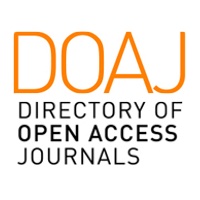CHLOROPHYLL CONTENT AND NET PHOTOSYNTHETIC PRODUCTIVITY OF SOWING GRASSPEA UNDER THE INFLUENCE OF BIOLOGICAL PREPARATIONS
DOI:
https://doi.org/10.32782/2310-0478-2024-2-7-12Keywords:
chlorophyll, net photosynthetic productivity, sowing grasspea, biological preparationsAbstract
The article presents the results of research on the effects of biological preparations Bioneostim (seed treatment before sowing – 1.0 l/t) and Vermistim D (7.0 l/t – seed treatment, 8.0 l/ha – crop spraying) on the total chlorophyll a and b content and the net photosynthetic productivity of sowing grasspea (Lathyrus sativus). At present, solving the issue of increasing the yield and quality of legume grains and the supply of plant protein in human nutrition is impossible without introducing new grain legume crops, among which sowing grasspea (Lathyrus sativus) has garnered significant interest. Currently considered a non-traditional crop, its biological and energy potential remains underestimated due to insufficient research into the species' biological characteristics and its cultivation technologies. The research was conducted under field conditions by the Department of Biology of Uman National University of Horticulture from 2022 to 2024. The effects of the biopreparation Bioneostim and the plant growth regulator Vermistim D were studied in crops of the grasspea variety “Ivolga”. Field experiments were conducted using the systematic method. The experiment was repeated three times. The experimental design included variants with seed treatment before sowing using Bioneostim at a rate of 1.0 l/t, both separately and in combination with Vermistim D (7.0 l/t – seed treatment and 8.0 l/ha – foliar treatment). Grasspea seeds were treated individually or with a mixture of Bioneostim and Vermistim D one day before sowing. Against the background of seed treatment with Bioneostim and Vermistim D, crops were sprayed with the plant growth regulator Vermistim D at a rate of 8.0 l/ha during the tillering phase. It was established that pre-sowing seed treatment with Bioneostim and the plant growth regulator Vermistim D, followed by post-emergence application of the latter, created the most favourable conditions for physiological and biochemical processes in plants, including photosynthetic processes. This was due to the direct stimulating effect of the biopreparations on the functioning of the pigment complex of the leaf apparatus and the net productivity of the crop. On average, over the years of research, during all studied phases of grasspea development, an increase in pigment content in leaves and net photosynthetic productivity was observed, exceeding the control by 23–55% for chlorophyll and by 20% for net photosynthetic productivity.
References
Гуляєв Б. І. Екофізіологія фотосинтезу: досягнення, стан та перспективи досліджень. Фізіологія рослин в Україні на межі тисячоліть. 2001. №1. С. 60–74.
Марченко К. Ю. Фотосинтетична продуктивність посівів вівса голозерного за дії біологічних препаратів. Селекція, генетика та технології вирощування сільськогосподарських культур. Матеріали ІХ Міжнародної науково-практичної конференції молодих вчених і спеціалістів (с. Центральне, 23 квітня 2021 р.). с. Центральне. Україна. 2021. С. 72–73. Електронний ресурс: http://confer.uiesr.sops.gov.ua.
Domaratskiy E., Shcherbakov V., Bazaliy V. [et al.]. Analysis of Synergetic Effects from Multifunctional Growth Regulating Agents in the of Sunflower Mineral Nutrition System. Research Journal of Pharmaceutical, Biological and Chemical. 2019. №10(2). Р. 301–308. http://www.rjpbcs.com/pdf/2019_10(2)/[41].
Карпенко В. П., Новікова Т. П., Притуляк Р. М., Гнатюк М. Г. Вміст пігментів у листках сочевиці за дії біологічних препаратів. Наукові горизонти. Вісник ЖНаЕУ. № 7(80). Житомир. 2019. С. 41–47.
Марченко К. Ю. Вміст хлорофілу та чиста продуктивність фотосинтезу вівса голозерного за дії біологічних препаратів. Зрошуване землеробство: міжвідомчий тематичний науковий збірник. Херсон: Видавничий дім «Гельветика». 2022. Вип. 77. С. 62–67.
Карпенко В. П., Притуляк Р. М., Коробко О. О. Елементи біологізованої технології вирощування нуту. Рекомендації виробництву. Черкаси: «БрамаУкраїна». 2019. 24 с.
Карпенко В. П., Полторецький С. П., Притуляк Р. М. та ін. Елементи біологізації в рослинництві : рекомендації виробництву (монографія); за ред. В. П. Карпенка. Умань : Видавець «Сочінський М. М.», 2017. 112 с.
Бойко Я. О. Вплив гербіциду МаксіМокс за сумісного використання з біологічними препаратами на вміст хлорофілу в рослинах гороху озимого. Новини науки та прикладні наукові розробки: матеріали Міжнародної науково-практичної конференції (м. Львів, 28 жовтня 2018 р.). Львів. 2018. Т. 5. С. 76–78.
Грицаєнко З. М., Грицаєнко А. О., Карпенко В. П. Методи біологічних та агрохімічних досліджень рослин і ґрунтів. К.: ЗАТ «Нічлава», 2003. 320 с.
Єщенко В. О., Копитко П. Г., Опришко В. П., Костогриз П. В. Основи наукових досліджень в агрономії: [підруч.]; за ред. В. О. Єщенка. К. : Дія. 2005. 288 с.








